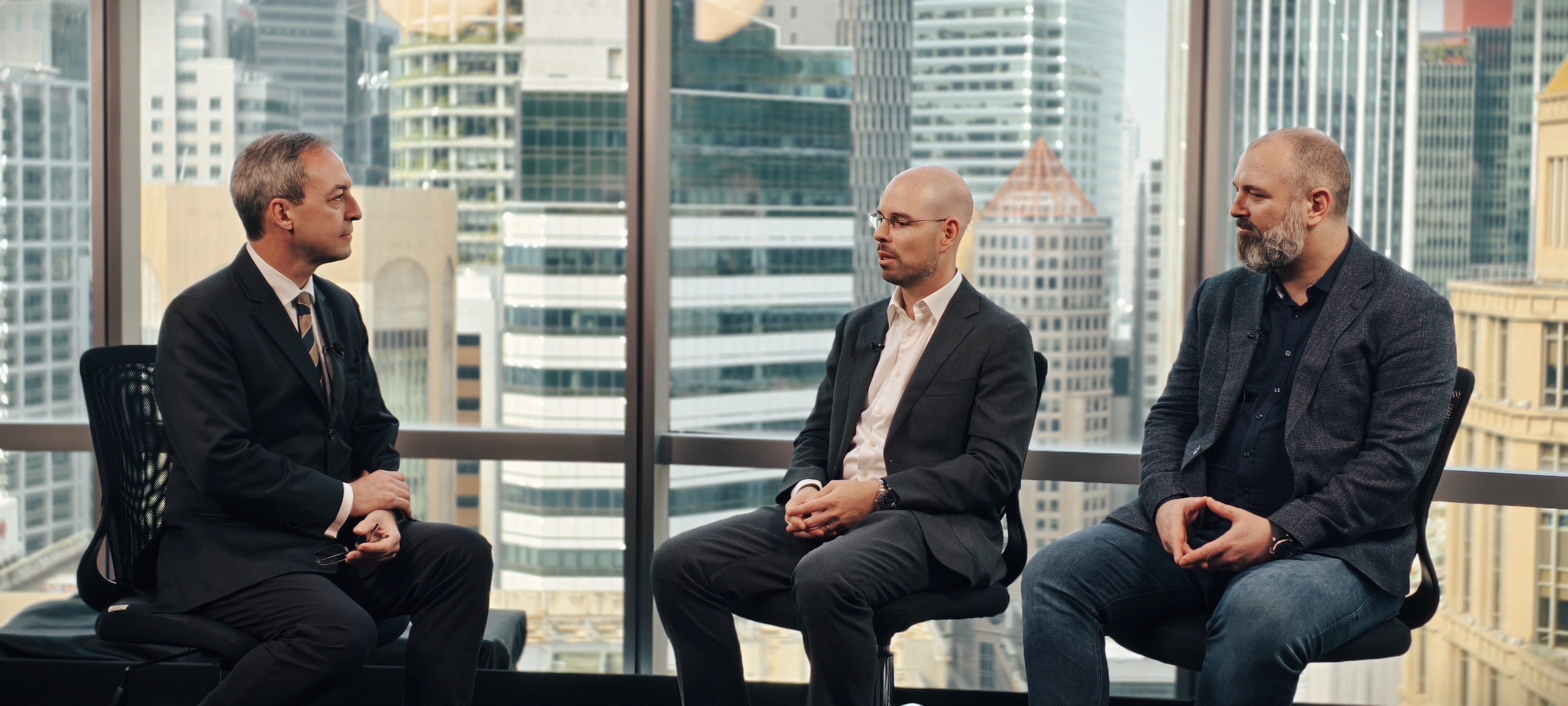Overview:
- AI disruption is reducing news click-through rates by up to 30%, forcing media to rethink survival strategies.
- Experts agree journalism will endure by using AI for augmentation, not full automation.
- Human oversight remains critical as AI can deliver confident but incorrect answers without verification.
- Monetization models may shift toward licensing verified content and building proprietary AI-ready archives.
- Future success depends on structuring content for machines, watermarking trust, and adapting to new distribution channels.
As artificial intelligence reshapes industries, journalism is confronting its latest existential challenge: declining click-through rates and the rise of AI-generated summaries. At the launch of BackgroundBriefing.news during World News Day 2025, experts debated whether the profession can adapt—or risk obsolescence.
Click-through rates on news links have dropped by 15% to 30%, according to recent studies, as readers increasingly rely on AI overviews instead of visiting original sources. “If the Economist is writing about it, you can be fairly well assured that this is a trend to be watched,” said host Mark Laudi.
About the speaker:
Mark Laudi
Founder
Contactsbook.Asia
Mark Laudi is an accomplished media mentor, business conference anchor, and radio and financial television current affairs show host. He is a veteran of the traditional and new media, with 25 years’ experience in print, radio, television, new and social media, and communications coach to senior business and government leaders in Asia and the Middle East.
Dr Jan Ondrus
Digital Disruption Chair
ESSEC Business School
Jan Ondrus is a Full Professor of Information Systems and currently heading the ESSEC Digital Disruption Chair. He holds an MSc and a PhD in Information Systems from HEC Lausanne (University of Lausanne) in Switzerland.
His research examines the strategic role of information technology in the development of digital ecosystems. He is particularly interested in the disruptive and transformative aspect of digital technology for business model innovation and social impact. Also, he has been specifically studying the emergence of mobile payment platforms for more than 20 years. His research has been published in top academic journals, presented at major conferences, and actively used in his teaching in the GMBA, the EMBA, and executive education programs at ESSEC. He has been serving as an Associate Editor for academic journals such as the Information Systems Journal (2013-2018) and Electronic Commerce Research and Applications (2015-2020).
Damian Leach
Ex-CTO
Workday
Damian born in the UK and is now proudly Singaporean, has 25+ years of Development, Engineering, Architecture, Transformation, Consultancy and Operations experience in C-Level global roles. In his spare time Damian helps his wife to scale Lush Platters https://www.lushplatters.com an F&B startup business in Singapore who recently kicked off a joint venture with the Select Group.
FAQs: (Click to find out!)
Is AI going to replace journalists completely?
No. Experts agree AI can automate repetitive tasks, but core reporting—like interviews and field observation—still requires humans.
How is AI currently impacting news consumption?
AI-generated summaries are reducing click-through rates by up to 30%, meaning fewer readers visit original news sites.
What does “augmentation” mean for journalism?
Augmentation means using AI to analyze data, summarize research, and handle routine work while journalists focus on interviews, verification, and narrative.
Why is human oversight still necessary if AI is so advanced?
AI can produce confidently wrong answers, so human editors must verify facts and context before publishing.
How can news organizations monetize in an AI-driven world?
Options include licensing verified content to AI platforms, building proprietary foundation models, and offering watermark-verified, trusted reporting.
Will advertising remain a viable revenue stream for media?
Traditional ad models are under pressure as AI overviews bypass websites, so diversified revenue beyond ads is critical.
What role does data quality play in AI’s effectiveness?
Poor data leads to poor outputs; high-quality, verified data is essential for accurate AI summaries and insights.
How fast is AI adoption expected to reshape journalism?
Meaningful changes are expected within about 18 months, driven by agents embedded in newsroom and enterprise workflows.
Can AI help journalists become better storytellers?
Yes; by offloading rote tasks, AI frees time for deeper reporting, stronger narratives, and investigative work.
What is the biggest challenge for journalism in the AI era?
Balancing efficiency gains from AI with trust, accuracy, and sustainable business models that don’t rely solely on clicks.
5W1H summary:
| Category | Summary |
|---|---|
| What |
1. AI disrupting journalism workflows 2. Declining click-through rates 3. Launch of BackgroundBriefing.news |
| How |
1. AI overviews reduce traffic 2. Automation and augmentation combined 3. Machine-readable content strategies |
| Why |
1. Audience prefers quick summaries 2. Ad revenue model under strain 3. Platforms dominate content discovery |
| Who |
1. Prof Jan Ondrus, ESSEC Business School 2. Damian Leach, ex-CTO Workday 3. Mark Laudi, Contactsbook.Asia |
| Where |
1. World News Day event 2. Singapore-based discussion 3. ASEAN media context |
| When |
1. October 2025 session 2. 8th World News Day 3. AI adoption accelerating now |
Declining clicks, rising machines
Moderator Mark Laudi outlined the problem: audiences often stop at AI-generated summaries instead of visiting source articles, cutting off the traffic that funds journalism. BackgroundBriefing.news is designed with machine readability in mind—structured speaker information, FAQs and summaries—to surface authoritative voices inside AI overviews and reclaim visibility. The site’s premise reflects a blunt reality: the AI layer is now a primary gateway to news consumption.
Automation vs augmentation
Prof Jan Ondrus of ESSEC Business School argued that journalism has endured multiple waves of disruption and will again—if it treats AI as augmentation rather than an existential threat. “You can automate a number of tasks and you have also augmentation, which is where media should look” told BackGroundBriefing.news. He emphasized that AI cannot replace core reporting. “We still have a reality to cover, and so far AI is not able to grasp this reality” told BackGroundBriefing.news.
Ondrus’s framing places AI and journalism survival in a practical light: let machines handle low‑value work—transcription, basic summaries, pattern spotting—so journalists can invest in interviews, verification and on‑the‑ground observation. That is where trust and differentiation still live.
Industry lessons: keep a human in the loop
Bringing an enterprise lens, Damian Leach, an ex‑CTO of Workday who now oversees global technology in shipping, said the value of AI depends on data quality and oversight. In his world, AI excels at anomaly detection, computer vision, and rapid synthesis across vast document sets, but it can generate “very confident, wrong answers” without human review. The newsroom parallel is clear: AI can speed research and analysis, yet editorial judgment must remain the fail‑safe before anything is published. For AI and journalism survival, human‑in‑the‑loop workflows are a feature, not a flaw.
Where the money moves
The panel’s hardest question was monetization. With AI overviews disintermediating traffic, ad‑supported models are strained. Ondrus suggested the payer will be “who derives the most value,” which could be:
- Platforms and AI companies licensing verified archives to reduce hallucinations and power premium features.
- End users paying for trusted, watermark‑verified reporting in a sea of low‑quality generative content.
- Enterprises and PR teams funding access for influence and accuracy within the AI discovery layer.
Leach floated the idea of watermarked, trusted content and even publisher‑built foundation models trained on verified reporting that can be licensed via connectors. That approach could let news organizations monetize their archives and real‑time feeds directly inside agentic systems—placing AI and journalism survival on a sustainable footing that doesn’t rely solely on pageviews.
Distribution shifts with audiences
Consumption habits have fragmented across TikTok, Instagram and other short‑form channels. The panel noted that newsrooms must be agile, meeting audiences where they are today and where they’ll be tomorrow—potentially in agentic, screen‑light experiences that deliver voice or multimodal summaries on demand. BackgroundBriefing.news’s machine‑first structure is one such adaptation: it surfaces authoritative answers that AI agents can cite, while preserving pathways to full interviews and source material.
The 18‑month horizon
While five‑year forecasts feel like “science fiction,” the panel aligned on an 18‑month window for meaningful change. Expect rapid adoption of agents embedded in workflows across industries, with personalized, role‑aware assistants becoming ubiquitous. For newsrooms, that means building pipelines and metadata that agents can trust—and designing products that monetize accuracy, timeliness and originality wherever audiences encounter them.
Bottom line: AI and journalism survival will favor newsrooms that (1) automate the rote, (2) lean into verified reporting, (3) structure content for machines and humans, and (4) experiment with direct licensing, watermarks and model partnerships. The craft of journalism remains essential; the business and distribution models are what must evolve.
More stories: Global wealth shake-up: Advisers trapped by lag-time as crypto demand soars







